Cross Stitch
BY ADELINE PANAMAROFF
Adeline, a freelance writer/proofreader, located in Edmonton, Alberta can be contacted at www.adelinepanamaroff.com for writing and marketing requests.
Counted cross stitch project incorporating glass seed beads and a metal bee shaped bead accent..
“Bumble & Hoot” Design by Just Nan / Stitched by Lorraine L.
History: This is one of the oldest styles of embroidery and has been seen in various regions of the world at different times throughout history. The earliest preserved instance of cross stitch has been found in an Egyptian tomb that dates to around 500 CE. Cross stitch was very popular in China in the 600s CE where it was worked with colored silk threads. It traveled along the Silk Road as both a commodity and a skill into Europe between 600-900 CE. Used to embellish various fabric items it became popular in Medieval Europe.
The most well-known example where cross stitch was used is the Bayeux tapestry, which was stitched with wool threads, sometime after 1066 CE. when the Normans invaded Britain. Catherine of Aragon is credited with bringing cross stitch to Britain when she stitched embellishments onto her husband’s clothing with this technique.
Patterns for cross stitch designs were probably produced during this period, but were shared through hand written and drawn directions, or with hands on demonstrations. The invention of the printing press in the 16th Century enabled the mass distribution of cross stitch patterns to Europe and beyond.
It was after this period that black work, a cross stitch done with black wool, on white linen, became popular. An offshoot of blackwork is Assisi embroidery where the entire background of a scene is worked in one color, with cross stitches, leaving the subject in silhouette relief, blue, red, and green being the usual color of choice.
Samplers which featured alphabets, numbers, religious passages from the Bible, and also utilized samples of different stitch techniques other then cross stitch started to become popular as a means to both practice embroidery techniques and as a means for the stitcher to learn their letters, numbers, and passages from the Bible.
Linen was the standard fabric to work cross stitches on. It’s even, loose weave made counting the number of threads to stitch across easy to manage. This all changed in 1890 CE when a German textile mill, Zweigart, invented Aida cloth, the now standard fabric of choice for counted cross stitch. Aida cloth’s stiff, even weave with large grid-like holes made this fabric easy to work with for most stitchers.
Innovation: During WWII prisoners of war turned to counted cross stitch as a means to pass the time. Sometimes pieces were even stitched from threads unraveled from a person’s own bed linen. Designs were mostly self made and consisted of political or religious messages.
The 1960s saw a massive resurgence of counted cross stitch. The number and variety of patterns and kits available for sale blossomed. Also the use of plastic canvas, using colored yarns for stitches, stamped cross stitch on cotton fabrics, and even patterns on Aida cloth with the color directions printed right on the fabric came to be common.
In the 1990s, with home computers becoming much more accessible, software was invented that would allow anyone to create their own cross stitch patterns. This was easy because the common grid of counted cross stitch translated well to the pixels of computer-generated images. Today even photographs or paintings can be “translated” into a cross stitch pattern.
Technique: The basic stitch is an X pattern of one diagonal stitch crossed over another. This can be used to create geometric, floral, animal motifs, or complicated pictures utilizing varying subtle changes in shade through the threads used. Originally, cross stitch was used simply as an embellishment at the edges of clothing such as collars, cuffs, borders around table cloths, doilies, or at the corners of dishtowels, and other everyday items. As the popularity of cross stitch increased, the complexity and the uses for it also expanded. Today large-scale pictures that can range in subject matter from landscape, people, wildlife, and anything else the imagination can dream up are used in counted cross stitch patterns that, through their use of color changes, can emulate fine art paintings and are often framed and hung on walls as decoration.
Counted cross stitch incorporating book related charms to create a 3-D effect. Worked by Stephanie B
Counted cross stitch differs from other forms of cross stitch in that each stitch is counted over an even number of threads on the fabric that it is embroidered on. It is usually worked on a fabric with an even weave that can easily be counted so that consistently sized stitches are created. Most often counted cross stitch is worked over two threads of fabric with two strands of threads used in each stitch. Linen, Aida, plastic canvas, or any other even weave material are good choices for cross stitching. Counted cross stitch is an easy and rewarding embroidery technique for beginners and seasoned stitchers alike.
References and Further Reading:
Note: The links above lead to external content. ENG is not responsible for the content of external sites.

